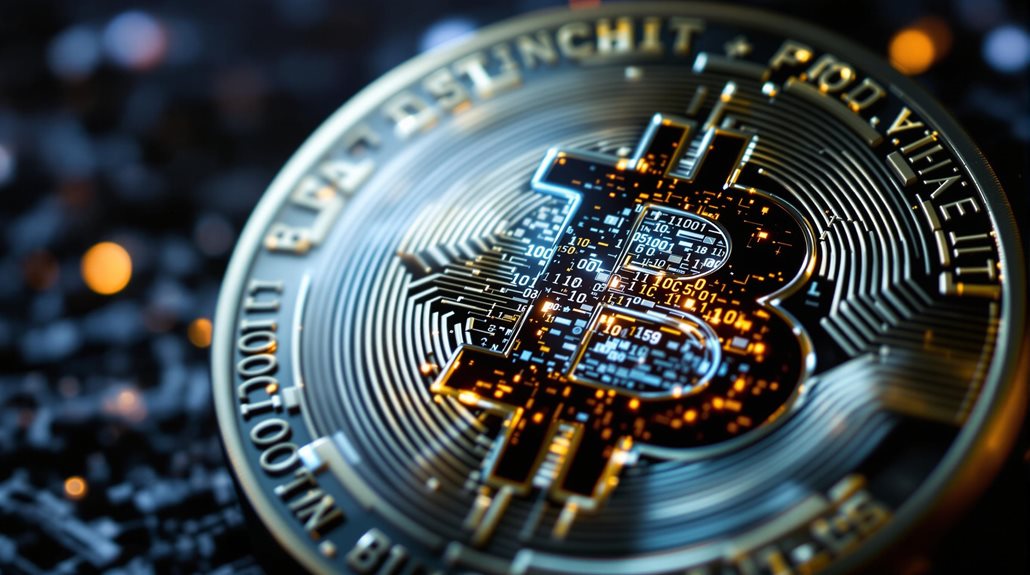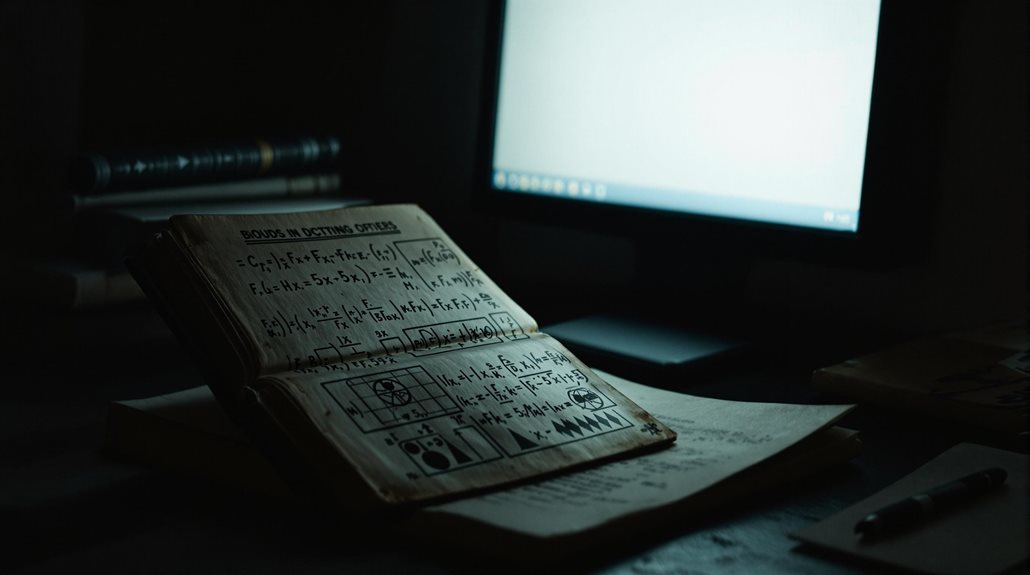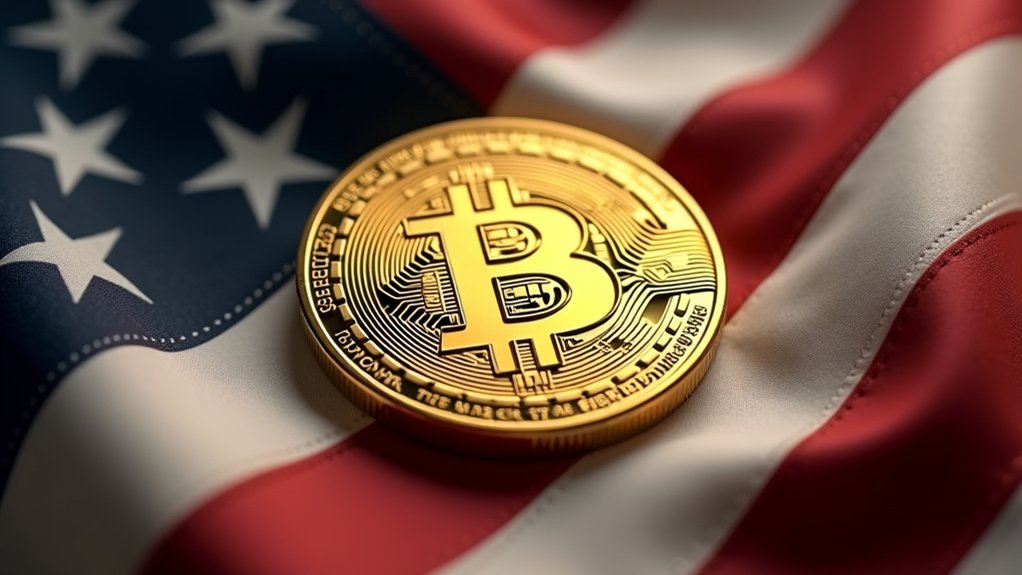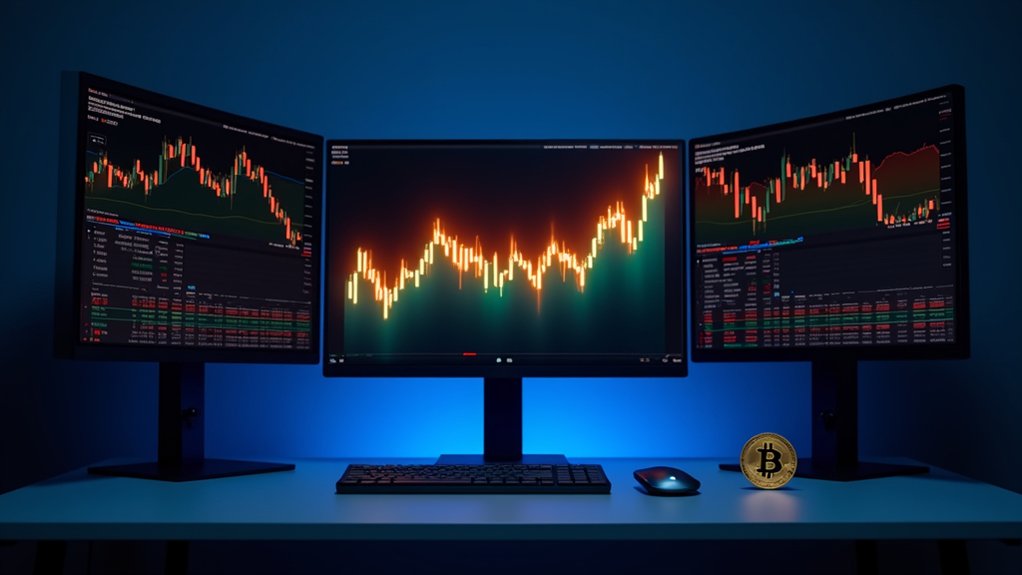Bitcoin Ordinals are digital collectibles created on the Bitcoin blockchain, similar to NFTs. They were introduced in January 2023 and let users inscribe data like images, text, and audio directly onto individual satoshis (the smallest unit of Bitcoin). Unlike traditional NFTs, Ordinals store their data completely on Bitcoin's blockchain without requiring external systems. They've gained significant popularity, with over 11 million inscriptions created by June 2023. There's much more to discover about this innovative digital art form.
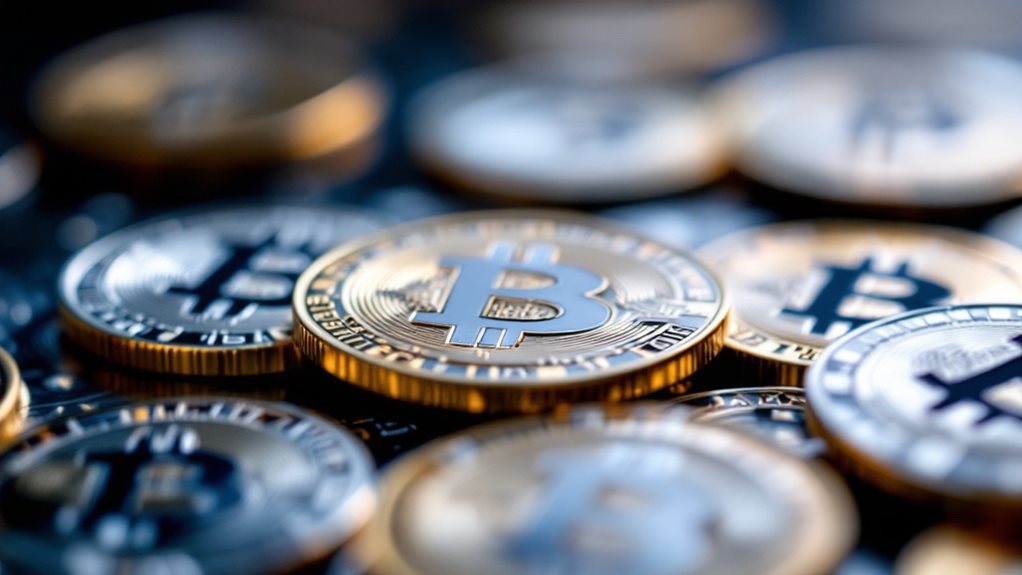
Bitcoin Ordinals represent a groundbreaking way to create digital collectibles directly on the Bitcoin blockchain. Introduced by Casey Rodarmor in January 2023, Ordinals let users inscribe data like images and text onto individual satoshis, which are the smallest units of Bitcoin. They work just like NFTs but don't need any extra layers or systems to function – they're built right into Bitcoin itself.
The technology behind Ordinals uses something called ordinal theory to give each satoshi its own unique number. It's like giving each tiny piece of Bitcoin a special serial number. This system takes advantage of recent Bitcoin updates called SegWit and Taproot, which made it possible to attach data to individual satoshis without changing Bitcoin's core rules. The introduction of BRC-20 tokens has further expanded the possibilities for creating semi-fungible assets on Bitcoin. The system includes six rarity levels that can determine the value of specific satoshis based on periodic Bitcoin events. The inscription process enables creators to add various data formats including text, images, audio, and video files.
When someone creates an Ordinal, they're actually inscribing data onto a satoshi that can be viewed in web browsers. This information gets stored directly on the Bitcoin blockchain, which means it's extremely durable and can't be easily destroyed or altered. It's different from many other NFTs that often store their data somewhere else outside the blockchain. Like the original peer-to-peer transactions that Bitcoin was designed for, Ordinals operate without any central authority.
The impact of Ordinals has been significant. By June 2023, people had created over 11 million Ordinal inscriptions, causing a huge increase in Bitcoin network activity. The popularity led to substantial transaction fees, reaching nearly $45 million in June 2023 alone. Even major players like Yuga Labs, known for creating famous NFT collections, have jumped in by launching their first Bitcoin NFT collection using Ordinals.
Compared to NFTs on other blockchains, Ordinals have some unique characteristics. They're generally more secure and longer-lasting because all the data is stored right on Bitcoin's blockchain. They're also simpler in structure than many complex NFT projects on other chains. However, they can be more expensive to create due to higher transaction fees, and they don't support features like automatic royalty payments that some other NFT platforms offer.
The arrival of Ordinals has sparked new interest in Bitcoin's capabilities beyond just being digital money. While they've created some debate about network efficiency, they've successfully shown that Bitcoin can be used for creating unique digital collectibles. This innovation has helped Bitcoin compete with other blockchains that specialize in NFTs and digital art, bringing new attention and activity to the original cryptocurrency network.
Frequently Asked Questions
Can Bitcoin Ordinals Be Stolen or Hacked Like Regular NFTS?
Yes, Bitcoin ordinals can be stolen or hacked, just like regular NFTs.
They're vulnerable to common crypto attacks, including phishing scams and private key theft.
However, they're considered somewhat safer than typical NFTs because they're on Bitcoin's network, which has strong security features.
The main risks come from user error, like falling for scams or not properly securing private keys.
The Bitcoin network itself is extremely difficult to hack.
What Happens to Ordinals if Bitcoin Undergoes a Major Network Upgrade?
During major Bitcoin network upgrades, ordinals might need to adapt to stay functional.
These upgrades could affect how ordinals work, similar to how software updates can change an app's features. The ordinal tracking system might require updates to match Bitcoin's new rules.
While some upgrades could make ordinals work better, others might create challenges. The ordinal community would need to guarantee their systems stay compatible with Bitcoin's changes.
How Do Transaction Fees Compare Between Ordinals and Regular Bitcoin Transfers?
Ordinal transactions typically cost more than regular Bitcoin transfers because they're bigger in size, carrying extra data for inscriptions.
While standard Bitcoin fees usually range from $0.50 to $2.50, Ordinal fees can spike much higher – reaching $37 per transaction in late 2023.
Both types of fees rise when the network gets busy, but Ordinals tend to cause more congestion.
The actual cost varies based on network traffic and the size of inscribed data.
Are There Any Environmental Concerns Specific to Bitcoin Ordinals?
Yes, there are specific environmental concerns with Bitcoin Ordinals.
They use more block space than regular Bitcoin transactions, which means more energy is needed to process them.
Each Ordinal inscription requires as much energy as mining an entire Bitcoin block.
Since Bitcoin mining already uses a lot of electricity – comparable to a small country's consumption – Ordinals add to this environmental impact by requiring even more power to process these special transactions.
Which Wallets Currently Support Bitcoin Ordinals Trading and Storage?
Several popular wallets support Bitcoin Ordinals trading and storage.
Xverse offers a non-custodial wallet that handles both Ordinals and BRC-20 tokens.
UniSat provides an API for inscribing satoshis.
The Ordinals Wallet is a community-funded marketplace and storage solution.
OKX Wallet lets users mint and trade Ordinals.
Gamma operates as a trustless marketplace built directly on Bitcoin's Layer-1.
These wallets all feature Taproot compatibility and support basic Ordinal operations.
